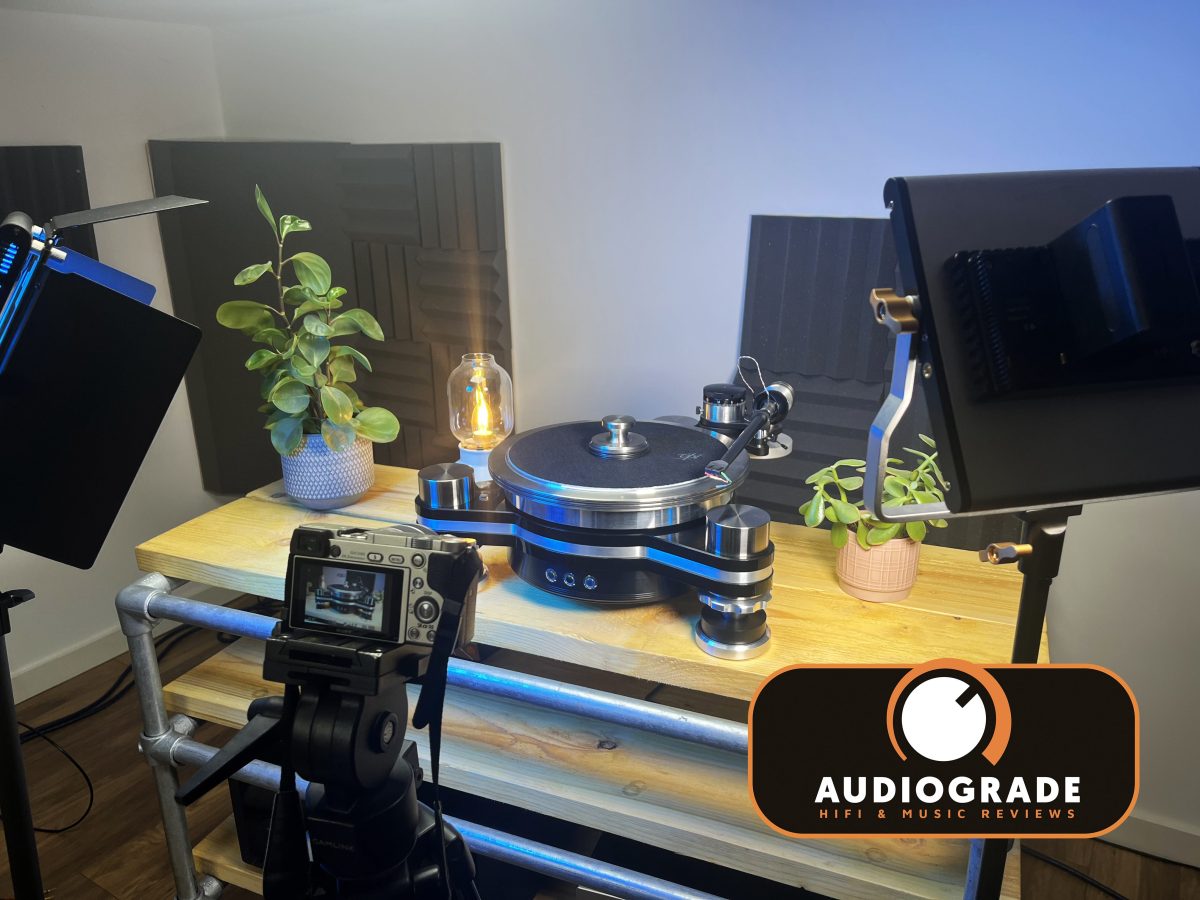- Edinburgh 0131 516 7561
- Glasgow
One of the most important functions of my job is to deliver positive reviews of my clients’ products. Each of them is keen to receive five-star reviews and editor’s choice accolades. Great reviews are one of the goals that drive them when they are designing their products; great reviews usually deliver strong sales. And for you, the consumer, a good review accompanied by a merit badge/multi-star-accolade may mean that the product you are considering purchasing is worth the investment.
In our audio enthusiast world, the pursuit of high-fidelity sound is a journey marked by meticulous attention to detail. Print and online hi-fi magazines can serve as beacons guiding us through the labyrinth of audio equipment, offering reviews that promise to reveal sonic nirvana. But amidst the technical jargon and subjective assessments, should we truly pay attention to these reviews?
Hi-fi magazines employ a systematic approach to evaluating audio equipment, often considering various parameters such as frequency response, distortion levels, signal-to-noise ratio, and imaging, among others. These evaluations are typically conducted in controlled environments using specialised equipment, ensuring consistency and accuracy in the assessment process. Additionally, reviewers often rely on their expertise and experience to provide subjective insights into the overall sonic performance and listening experience.
However, despite the rigor and expertise involved, hi-fi magazine reviews are not without their limitations. Firstly, the subjective nature of audio perception means that what sounds pleasing to one listener may not necessarily resonate with another. It is important to note that our hearing abilities change over time; I’m certain that my perception of a recording is very different to that of a twenty-something reviewer.
While reviewers strive to offer objective evaluations, personal preferences and biases inevitably influence their assessments. We should always check which tracks a reviewer has tested a product with. Is a primitive hip-hop recording going to demonstrate a system’s capabilities as well as that of an intricately produced The Smile number? Moreover, the sheer diversity of audio equipment and the myriad ways in which they interact with different listening environments make it challenging to provide universally applicable verdicts.
Furthermore, the commercial dynamics of the audio industry cannot be overlooked. Hi-fi magazines rely on advertising revenue and partnerships with manufacturers, raising questions about the impartiality of their reviews. While reputable publications uphold ethical standards and strive for transparency, there is the potential for conflicts. However, I am proud to work with the U.K. hi-fi press as it is usually extremely upstanding and correct in its approach. Unscrupulous manufacturers may try to exert subtle pressure to ensure favourable reviews of their products, compromising the integrity of the evaluation process, but this doesn’t really work. (NB I don’t work with unscrupulous manufacturers).
So, where does this leave the discerning audio enthusiast? While hi-fi magazine reviews offer valuable insights and serve as a useful starting point for evaluating audio equipment, they should be approached with a slight degree of scepticism. Instead of blindly relying on numerical ratings or glowing endorsements, it is essential to complement magazine reviews with personal auditioning and research.
Listening to audio equipment in a familiar environment with your preferred music genres allows you to gauge its compatibility with your sonic preferences accurately. Additionally, seeking opinions from fellow enthusiasts and participating in online forums can provide valuable real-world perspectives and experiences. Moreover, consulting multiple sources, including user reviews, professional audio engineers, and independent reviewers, can offer a more comprehensive understanding of a product’s performance.
Ultimately, the decision to pay attention to hi-fi magazine reviews rests on striking a balance between objective evaluation and subjective experience. While these reviews offer valuable technical insights and expert opinions, they should be considered alongside personal listening impressions and real-world user feedback.
Lastly, I thought that you’d be interested to read how some of the print and digital magazines in the U.K. review products:
Audiograde
Like our readers, we’re passionate about hi-fi and have equally high standards and expectations. That’s why when we launched Audiograde, we invested heavily in a dedicated listening and testing suite that’s as neutral sounding as possible, so that we can test and hear each component as it should sound.
Every product that passes through Audiograde HQ gets the same level of professional treatment, regardless of price point or brand. This involves dedicated running in time followed by weeks of evaluation, comment and second opinion when required, so that the story we’re telling is a true reflection of real world performance. We ensure all partnering equipment is of a similar price point and standard, while being a mix of brands that represent the best at their respective levels, without fear or favour.
From building our own hi-fi stands to acoustically treating our main test space, we’re also transparent in our approach to take our readers with us on our hi-fi journey and are always open to feedback and comments, as being part of the hi-fi community means a lot to the team.
Alongside our years of experience, what we also pride ourselves on is authenticity, right down to our dedication to in-house photography and creative content, so that you can trust our reviews. Choosing quality hi-fi that’s right for you is a big investment, and our aim is help you make informed decisions to do just that, because, put simply, we love music, and music sounds better through quality hi-fi.
Hi-Fi News
Hi-Fi News’ readers can take full confidence in the fact that every product featured on our front cover, throughout the magazine and on our website has been comprehensively reviewed (auditioned, photographed and lab tested) at our facility.
Innovative, research-based test & measurement – with exclusive colour ‘data visualisation’ – underpins every review in Hi-Fi News. In every issue you will discover performance-determining facts that are unique to our reporting
All our review products are typically subject to a one-month test process from shipping, unpacking, installation, photography, lab work, extended listening, disassembly/packing and collection.
Our reviews are never brief ‘hands on’ experiences of a product from a press conference or distributor’s back room spun up into a four or five page article.
Products reviewed in Hi-Fi News already have secure distribution channels in the UK. So, readers should be able to arrange their own auditions if suitably inspired!
Every product reviewed in Hi-Fi News is shipped to and installed at our main facility. It is photographed by us (unless some stock shots conform precisely to our template) and separately lab tested to a uniquely world-class standard.
We believe in quality investigative journalism by experienced writers and editors – we ask questions, we do our research and we make truly independent evaluations. We do not release reviews to brands for ‘fact checking’ or other modification prior to publication. They read it when you read it.
Above all we respect our readers. You demand the best reviews informed by decades of experience, product knowledge and technical expertise. We endeavour to live up to that expectation.
What Hi-Fi
What Hi-Fi? is a buying guide at its very core. We have specialised in testing hi-fi and home cinema for the best part of five decades and so have a very strong contextual knowledge with which to judge products in these fields.
Our job is to rigorously test every major product in every important sector of the audio and AV market, and come up with recommendations. An important part of that reviewing process is the awarding of star ratings. Complementing every single one of What Hi-Fi?’s reviews, whether published in the monthly magazine or on whathifi.com, is a star-rating system with a scale of one to five stars.
As printed in every issue of the magazine, five stars mean ‘one of the best at the price’; four stars represent ‘a serious contender’; three stars are awarded to products that are ‘worth a look’; two stars are given to ‘disappointing’ products; and one star is dished out to ‘awful’ kit (of which there are, fortunately, very few).
These ratings are judged on a value-for-money basis, with the most important criterion being performance. But let’s be clear about this: if something performs well but is badly made or a pain to use (or both), it won’t receive a high star rating. The whole package has to be right for it to get a good review and rating.
We may stop short of awarding a product the full five-star set because it lacks a particular feature we believe to be important to many, but if that doesn’t apply to you then the omission won’t be an issue. Equally, the product could perform excellently but be priced a little too high against direct rivals that perform just as well or better. Whatever the reasoning for the lost star, it is worth taking a careful read of our review to see if the shortcoming(s) we highlight has any impact on you.
Don’t routinely ignore four-star products; they could actually be perfect for your needs and, depending on your requirements, may even be a better choice for you than a five-star one.
Matt Tasker (Ammonite Media), February 2024

